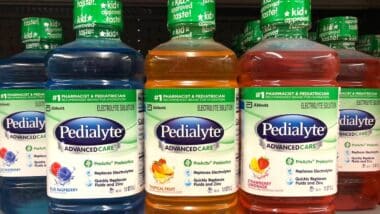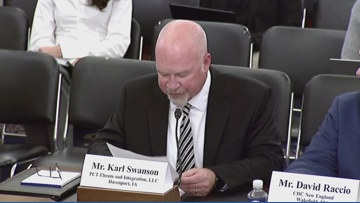Report on the Arkansas State University Speech and Hearing Center’s Summer Literacy Program
Date: July 24, 2025
Executive Summary
The Speech and Hearing Center (SHC) at Arkansas State University conducted a summer camp for children aged six to twelve, focusing on literacy improvement and culminating in a theatrical production. This initiative directly addresses summer learning regression for children with literacy challenges, such as dyslexia. The program demonstrates a strong alignment with several United Nations Sustainable Development Goals (SDGs), notably SDG 4 (Quality Education), SDG 10 (Reduced Inequalities), and SDG 3 (Good Health and Well-being), by providing targeted educational support and fostering personal development. It also contributes to SDG 8 (Decent Work and Economic Growth) through the professional development of graduate students.
Program Objectives and SDG Alignment
Primary Objective
The principal aim of the summer reading program was to prevent the regression of literacy skills during the summer break and to actively improve them. The program provided four hours of specialized training weekly for children who struggle with literacy.
Alignment with Sustainable Development Goals (SDGs)
- SDG 4: Quality Education: The program provides inclusive and equitable quality education by offering specialized instruction to children with learning difficulties, ensuring they have the tools to achieve literacy and lifelong learning.
- SDG 10: Reduced Inequalities: By focusing on children with dyslexia, the initiative works to reduce educational inequalities, providing essential support to ensure these children are not left behind.
- SDG 3: Good Health and Well-being: The program enhances the well-being of participants by building confidence and providing coping mechanisms for academic challenges, as evidenced by parental testimony regarding a child’s newfound willingness to perform publicly.
- SDG 8: Decent Work and Economic Growth: The camp serves as a valuable training ground for communication disorder graduate students, equipping them with practical skills and experience, thereby promoting productive employment and decent work in the field of speech-language pathology.
Methodology and Implementation
Program Structure
The program integrated therapeutic literacy training with a functional, engaging project. Graduate students in communication disorders were instrumental in delivering the curriculum and supporting the children.
Curriculum and Activities
- Functional Application: Participants engaged with a script for “Charlie and the Chocolate Factory,” applying their literacy skills in a practical context through reading, production planning, set decoration, and line rehearsal.
- Specialized Instruction: The Barton Reading and Spelling System was utilized as a core curriculum. Graduate student clinicians adapted the system to meet the specific needs of each child.
- Structured Sessions: Daily sessions commenced with a script reading to warm up cognitive functions, followed by targeted exercises using the training curriculum to improve the decoding of words, phrases, and essays.
- Phonological Awareness: A key component involved teaching the rules governing word spelling to strengthen the foundational understanding of reading.
Outcomes and Impact
Impact on Child Participants
The program successfully equipped children with improved literacy and coping skills for their return to school. Parental reports confirmed significant progress, noting one child with dyslexia who performed as a narrator with a level of confidence previously thought unattainable. This outcome directly supports the objectives of SDG 4 and SDG 10 by providing quality, inclusive education and reducing inequality.
Professional Development for Graduate Students
The program provided an invaluable experiential learning opportunity for graduate students, directly contributing to SDG 8 by preparing a skilled workforce.
- Students gained proficiency in applying and modifying the Barton Reading and Spelling System, increasing their confidence in providing reading intervention.
- They developed advanced clinical skills in cueing, providing feedback, and reinforcing learning for clients with literacy challenges.
- Graduate students reported a deepened understanding of the complexities of dyslexia and a renewed passion for literacy intervention.
Conclusion
The SHC’s summer reading bootcamp proved to be a highly effective, multi-faceted program. It successfully mitigated summer learning loss and enhanced literacy skills among children with learning difficulties while simultaneously providing critical, hands-on training for future speech-language pathologists. Through its targeted approach, the initiative makes a significant contribution to achieving the Sustainable Development Goals for Quality Education (SDG 4), Reduced Inequalities (SDG 10), Good Health and Well-being (SDG 3), and Decent Work (SDG 8).
1. Which SDGs are addressed or connected to the issues highlighted in the article?
SDG 4: Quality Education
- The article’s central theme is a summer reading program at Arkansas State University’s Speech and Hearing Center designed to improve literacy skills for children aged six to twelve, particularly those with dyslexia. This directly aligns with the goal of ensuring inclusive and equitable quality education. The program aims to “not only maintain literacy skills, but to improve them” during the summer, preventing skill regression.
SDG 3: Good Health and Well-being
- The program addresses dyslexia, which is a learning disorder. By providing specialized support, the camp helps children develop “coping skills they can use when they go back to school.” This contributes to their mental well-being by reducing the stress and challenges associated with their condition, promoting their ability to thrive in an academic environment. The involvement of speech-language pathology students also connects the program to the broader health services field.
SDG 10: Reduced Inequalities
- The summer camp specifically provides “extra support” for children with dyslexia. This initiative aims to reduce the educational gap that can exist between children with learning disabilities and their peers. By empowering these children and improving their literacy, the program promotes their inclusion and ensures they are not left behind due to their disability.
SDG 17: Partnerships for the Goals
- The program is a collaborative effort involving multiple stakeholders. It is a partnership between a public institution (Arkansas State University), its specialized Speech and Hearing Center, graduate students who are future professionals, and the community (the children and their families). The article highlights that “Communication disorder graduate students were essential in this summer’s camp experiences,” demonstrating a partnership that builds capacity and delivers services.
2. What specific targets under those SDGs can be identified based on the article’s content?
SDG 4: Quality Education
- Target 4.1: By 2030, ensure that all girls and boys complete free, equitable and quality primary and secondary education leading to relevant and effective learning outcomes.
- The program supports primary school-aged children (6-12) by improving their foundational literacy skills, which are essential for achieving effective learning outcomes throughout their education.
- Target 4.6: By 2030, ensure that all youth and a substantial proportion of adults, both men and women, achieve literacy and numeracy.
- The article’s core focus is a “summer reading program” that uses a “specific training curriculum to improve decoding of words, phrases and essays,” directly contributing to the achievement of literacy.
- Target 4.a: Build and upgrade education facilities that are child, disability and gender sensitive and provide safe, non-violent, inclusive and effective learning environments for all.
- The camp provides a supportive and inclusive learning environment specifically for children who “struggle with literacy,” including those with dyslexia, a disability.
- Target 4.c: By 2030, substantially increase the supply of qualified teachers…
- The article notes the valuable experience gained by graduate students, such as learning “how to use the Barton Reading and Spelling System.” This training increases the supply of qualified professionals who can provide specialized literacy intervention.
SDG 3: Good Health and Well-being
- Target 3.4: By 2030, reduce by one third premature mortality from non-communicable diseases through prevention and treatment and promote mental health and well-being.
- The program promotes well-being by teaching children with dyslexia “coping skills,” which helps them manage their learning disorder and reduces associated stress, thereby improving their overall mental health.
SDG 10: Reduced Inequalities
- Target 10.2: By 2030, empower and promote the social, economic and political inclusion of all, irrespective of… disability…
- The program empowers children with a learning disability (dyslexia) by giving them the tools and confidence to succeed academically, promoting their full inclusion in the educational system. A parent’s comment that she “never in a million years would expect her [daughter] to get up there” illustrates this empowerment.
SDG 17: Partnerships for the Goals
- Target 17.17: Encourage and promote effective public, public-private and civil society partnerships…
- The summer camp is a clear example of a public-civil society partnership, leveraging the resources of a state university and its graduate students to provide a needed service to children in the community.
3. Are there any indicators mentioned or implied in the article that can be used to measure progress towards the identified targets?
SDG 4: Quality Education
- Implied Indicator: Improvement in literacy proficiency levels. The program’s stated goal is to “not only maintain literacy skills, but to improve them.” Progress could be measured by assessing the children’s reading and decoding skills before and after the camp.
- Implied Indicator: Number of students trained in specialized literacy intervention. The article highlights the training of “communication disorder graduate students” in systems like the “Barton Reading and Spelling System.”
- Implied Indicator: Increased confidence and participation of students with disabilities. A parent’s testimony about her daughter, the narrator, (“You would never think that child has dyslexia”) serves as an anecdotal measure of increased confidence and functional participation.
SDG 3: Good Health and Well-being
- Implied Indicator: Acquisition of coping skills by individuals with learning disorders. The article explicitly mentions that through the program, children “learn coping skills they can use when they go back to school.”
SDG 10: Reduced Inequalities
- Implied Indicator: Number of children with disabilities participating in supplemental education programs. The article describes a camp specifically designed for children who struggle with literacy, including those with dyslexia.
SDG 17: Partnerships for the Goals
- Implied Indicator: Number of partnerships between academic institutions and communities for development goals. The existence of the program itself, a collaboration between Arkansas State University and local families, is an indicator of such a partnership.
4. Create a table with three columns titled ‘SDGs, Targets and Indicators” to present the findings from analyzing the article.
| SDGs | Targets | Indicators (Mentioned or Implied) |
|---|---|---|
| SDG 4: Quality Education |
4.1: Ensure equitable and quality primary education.
4.6: Achieve literacy and numeracy for all youth. 4.a: Provide inclusive and effective learning environments. 4.c: Increase the supply of qualified teachers. |
– Improvement in literacy proficiency levels of participating children. – Functional application of literacy skills (e.g., reading scripts, rehearsing lines). – Increased confidence and participation of students with disabilities. – Number of graduate students trained in specialized literacy intervention methods. |
| SDG 3: Good Health and Well-being | 3.4: Promote mental health and well-being. | – Acquisition of coping skills by children with learning disorders. |
| SDG 10: Reduced Inequalities | 10.2: Empower and promote the inclusion of all, irrespective of disability. | – Participation rate of children with disabilities in specialized support programs. – Anecdotal evidence of empowerment and increased self-confidence. |
| SDG 17: Partnerships for the Goals | 17.17: Encourage and promote effective public-civil society partnerships. | – Existence of collaborative programs between universities and local communities to address specific needs. |
Source: astate.edu







